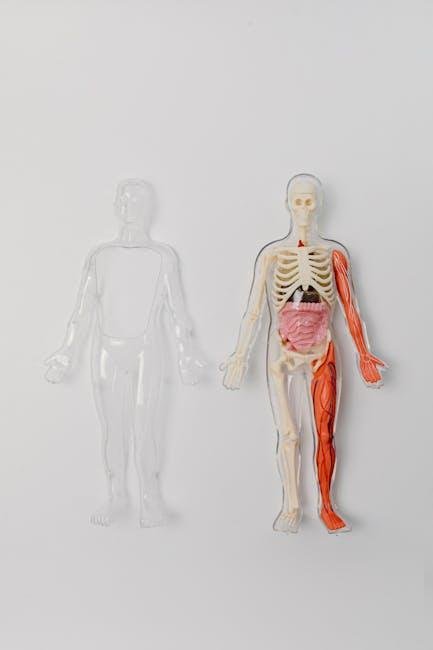In the sprawling digital landscape, where countless websites vie for attention and authority, the architecture of your site is not just a matter of aesthetics; it’s a crucial factor in determining its success. Imagine your website as a bustling city, where every page is a distinct neighborhood connected by roads of internal links, guiding visitors and search engines alike through a maze of data. Mastering internal linking strategies is essential for navigating this intricate web, ensuring a seamless user experience while enhancing your site’s discoverability and ranking. In this article,we will explore the art and science of internal linking,uncovering effective techniques that will empower you to construct a well-oiled digital ecosystem,optimizing your site’s structure for both users and search engines. Prepare to delve into the nuances of link placement, anchor text, and the judicious use of hierarchical linking, as we illuminate the path to a more cohesive and navigable website.
Understanding the Importance of Internal Linking for SEO Success
Internal linking serves as the backbone of a well-structured website, enhancing both user experience and search engine optimization. By strategically embedding links within your content, you create a clear path for visitors to navigate your site, encouraging them to explore additional resources.This not only keeps users engaged but also informs search engines about the hierarchy and relevance of your content. Key benefits of internal linking include:
- Improved Crawlability: Search engines can easily discover and index the interconnected pages on your site.
- Enhanced User Engagement: A logical linking structure guides users to related content,reducing bounce rates and increasing dwell time.
- Boosted SEO authority: Distributing link equity across your site strengthens pages that need a ranking boost.
Along with these benefits, employing a strategic internal linking strategy can lead to higher conversion rates. Such as, when users are presented with relevant links to products or helpful resources, they are more likely to take action. Here’s a simple table illustrating how effective internal linking can impact essential metrics:
| Internal Linking Strategy | Impact on Metrics |
|---|---|
| Linking to high-Quality Content | Increased click-through rates on linked pages |
| Using Descriptive Anchor Text | Higher user engagement levels |
| Regularly Updating Links | Improved overall site authority |

crafting an Effective Internal Linking Structure
Creating a robust internal linking structure involves understanding the relationships between your site’s content.To begin,consider the following essential strategies to enhance your internal linking:
- Hierarchy Matters: Establish a clear hierarchy from your homepage to subcategories and individual posts. Ensure users can easily navigate through your content.
- Anchor Text: Choose descriptive and relevant anchor text that provides context to users and search engines alike.
- Contextual Relevance: Link related content to create a rich user experience and keep visitors engaged longer on your site.
Utilizing a variety of link types can further diversify your strategy.Consider the following types of links:
| Link Type | Description |
|---|---|
| Breadcrumb Links | Allow users to trace their path back to previous pages, enhancing navigation. |
| Related posts | Automatically generate links to similar articles to guide readers to explore more content. |
| Content Upgrades | Link to additional resources or downloadable content to encourage user engagement. |

Tips for Creating Contextual Anchor Text that enhances User Experience
Creating effective internal links is about more than just connecting pages; it’s about providing meaningful context to enhance the user’s journey through your site. Start by ensuring that your anchor text is relevant and descriptive. Instead of generic phrases like “click here,” opt for specific terms that accurately summarize the linked content. This not only helps users understand what to expect but also aids in search engine optimization. An anchor text that reflects the content it leads to will improve the click-through rate and facilitate better navigation.
Additionally, consider the positioning of your links within the content. Embed them naturally within the flow of your writing rather than interrupting the reader’s experience. Here are some tips for optimal placement:
- contextual Relevance: Link to content that relates directly to the surrounding text.
- Use Variations: Diversify your anchor text to avoid repetitive phrases.
- Limit Link Quantity: Avoid overwhelming the reader with too many links; focus on quality over quantity.
| Anchor Text Example | Context |
|---|---|
| SEO Strategies | Linking to an article about optimizing content for search engines. |
| Building Site Authority | Connecting to a guide on improving site reputation. |

analyzing and Optimizing Your Internal Linking Strategy for Growth
Having a well-structured internal linking strategy is crucial for enhancing user experience and improving search engine optimization. By understanding which pages or posts on your website receive the moast traffic,you can strategically place links to less popular content,effectively guiding visitors toward valuable information. Consider these key factors to analyse your internal linking:
- Link Depth: Ensure that crucial pages are easily accessible within just a few clicks from the homepage.
- Anchor Text Optimization: Use descriptive, keyword-rich anchor text to help search engines understand the context of linked pages.
- Content Relevance: Link between related articles to provide additional value and context to readers.
Once you’ve evaluated your current links, it’s time to optimize. Regular audits can reveal any broken links or opportunities for betterment. Implement a structured approach tailored to your audience’s interests and behaviors.You might also want to monitor the following metrics to gauge the effectiveness of your strategy:
| Metric | Description |
|---|---|
| Click-Through Rate (CTR) | Measure how often visitors click your internal links. |
| Bounce Rate | Indicates if visitors are leaving after viewing only one page. |
| Page Load Time | Assess if slow loading pages are affecting users’ ability to navigate. |
Insights and Conclusions
In the digital landscape, where every click can influence a visitor’s journey and every page contributes to the greater narrative of your site, mastering internal linking strategies is akin to crafting a map that guides users to their desired destinations. As we conclude our exploration of effective internal linking, remember that these strategies are not merely technicalities; they are the threads that weave together the fabric of your site’s architecture. By thoughtfully connecting your content, you enhance not only navigability but also the user experience and search engine visibility.As you implement these insights, consider each link as an invitation, a pathway that encourages exploration and engagement. Your website is a dynamic ecosystem, and with every strategic link, you cultivate an environment where information flows seamlessly, audience interest grows, and your content flourishes.
In the ever-evolving world of digital marketing, the key to maintaining a robust site structure lies in continuous learning and adaptation. As algorithms change and user behavior shifts, revisit your internal linking strategies regularly to ensure they align with best practices and serve your audience effectively.
By embracing these principles, you position your site not just as a collection of pages, but as a cohesive narrative—a journey that beckons visitors to delve deeper, connect more meaningfully, and return time and again. Let your internal links illuminate the path, guiding each visitor towards the treasure trove of knowledge you’ve curated. The art of internal linking is, after all, about building bridges—between ideas, between visitors and content, and ultimately, between your site and success.



